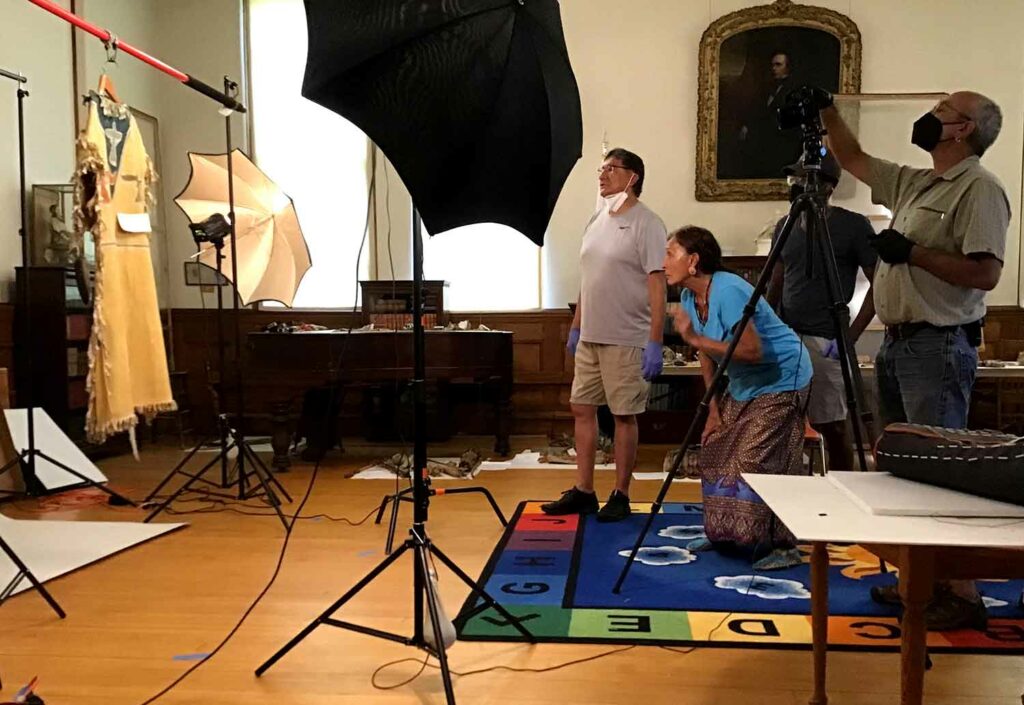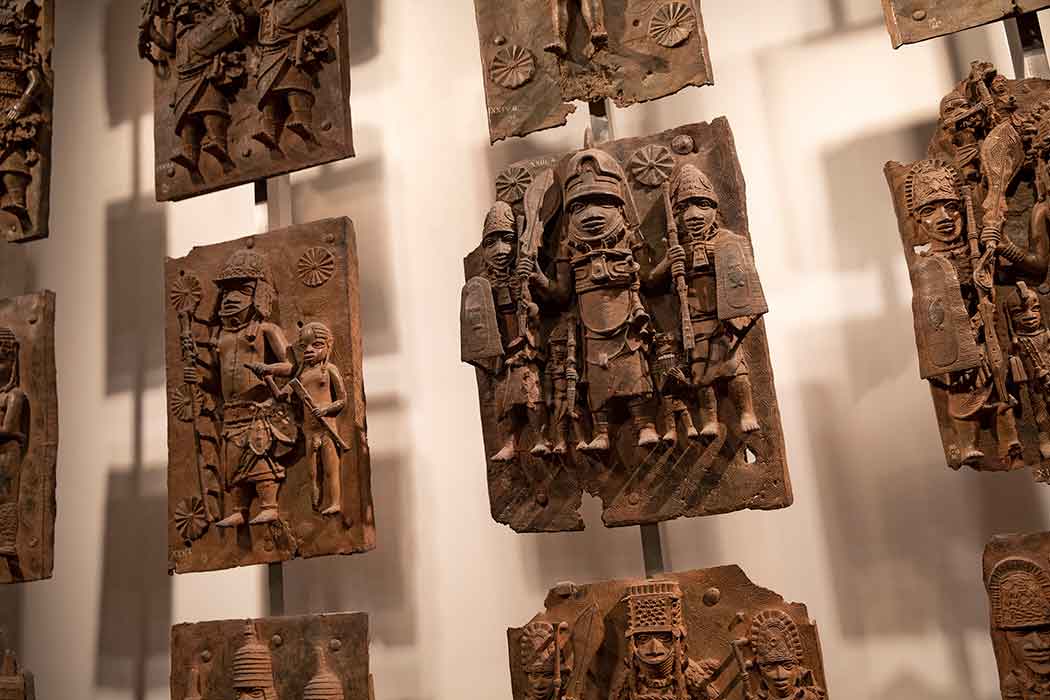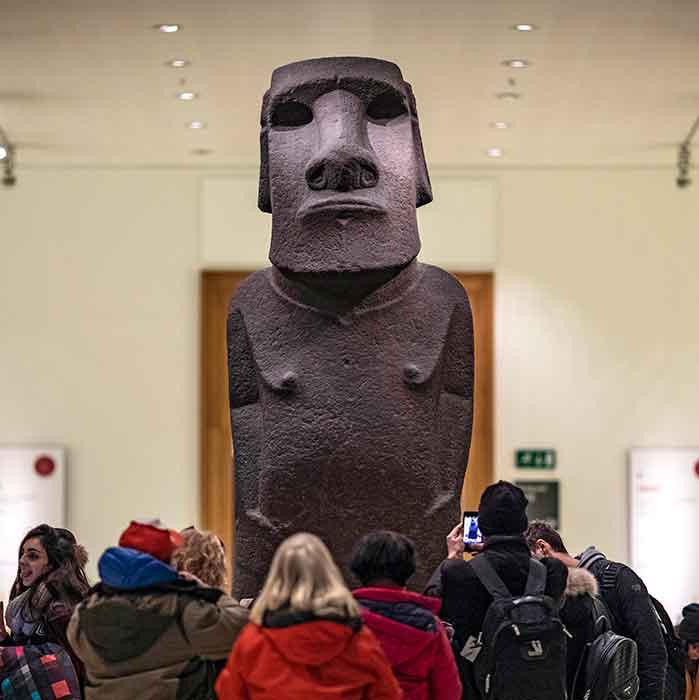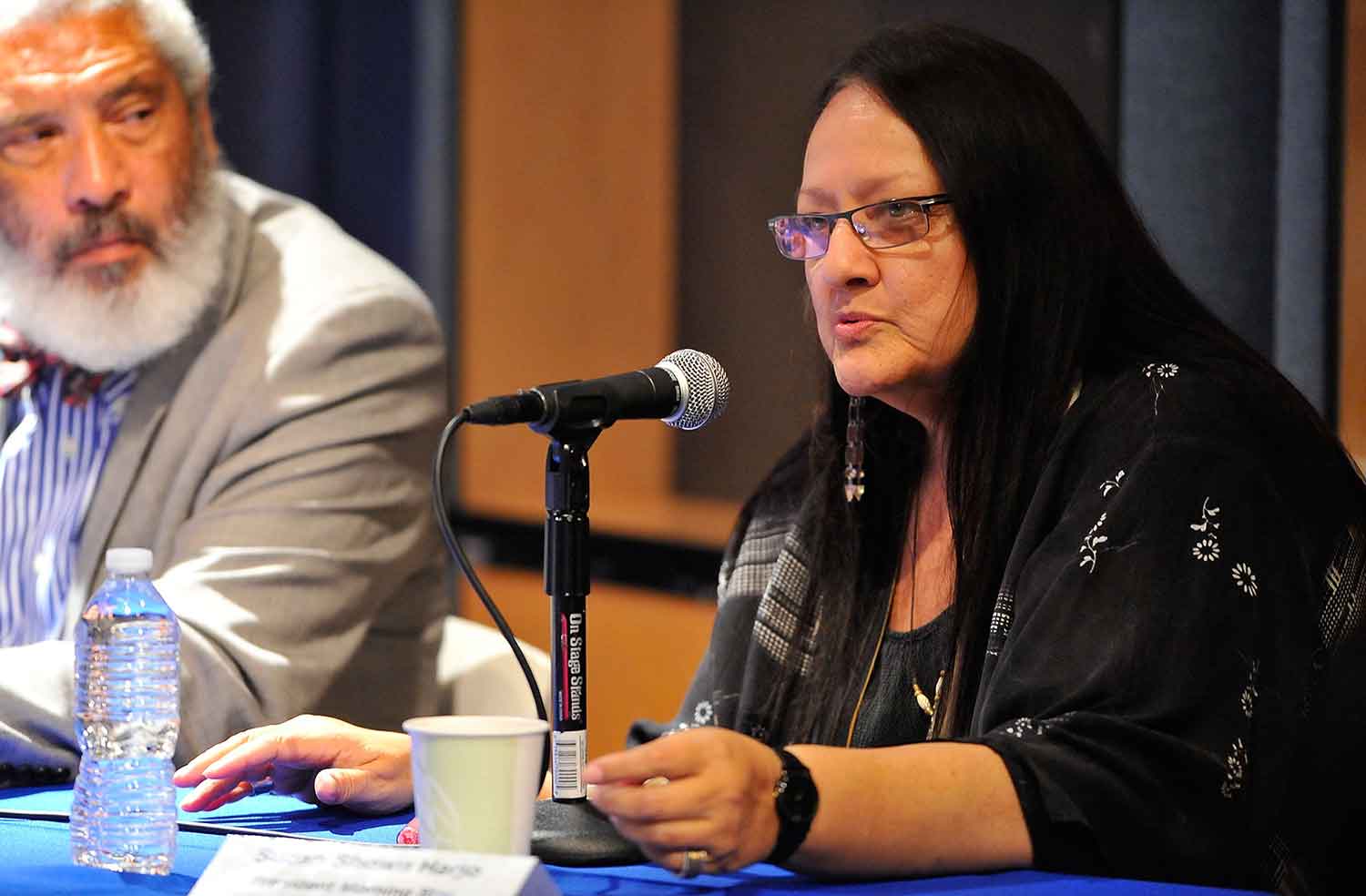Going Home
A museum in Massachusetts has returned some of the objects in its collection to their rightful owners—members of the Lakota Sioux.

Elizabeth Martin, Barre Library Association
Jeff Not Help Him and Leola One Feather, archivists from Pine Ridge Reservation, an Oglala Lakota reservation in South Dakota, pose with items that have been displayed at the Founders Museum but will now be returned to the Lakota Sioux. Jeff Not Help Him believes that the shirt may be linked to members of his family.
A museum in Massachusetts has returned some of the objects in its collection to their rightful owners—members of the Lakota Sioux. The objects were taken from the Lakota Sioux more than 100 years ago.
On November 5, officials at the Founders Museum held a repatriation (return) ceremony with members of the Lakota Sioux who had traveled to Massachusetts to receive the artifacts. Some of the artifacts are connected to the 1890 Wounded Knee massacre, in which the U.S. military killed between 250 and 300 members of the Lakota Sioux in South Dakota.
Some of the objects that were returned to the Lakota Sioux are thought to have been stolen at the site of the massacre. Shortly after, a man named Frank Root, who ran a traveling show, made money showing the objects to the public. Root later donated the objects to the Founders Museum, which has had them ever since.
Many of the people who attended the ceremony said their ancestors had passed the memories of Wounded Knee down to them. Knowing that museums were displaying objects stolen from their ancestors only added to their pain. That’s why return of the objects was extremely important.
Wendell Yellow Bull, a member of the Oglala Lakota, grew up hearing stories about his ancestor, Joseph Horn Cloud, who was at Wounded Knee. Yellow Bull told the Boston Globe that the return was “the beginning of healing.”

Elizabeth Martin, Barre Library Association
Jeff Not Help Him and Leola One Feather watch as a photo is taken of a ghost shirt, which the Lakota Sioux people believe to have spiritual powers.
The Founders Museum is one of many museums and universities that have objects connected to American Indian history in their collections. A 1990 U.S. law requires that public institutions (which are funded by the government) return such objects to their rightful owners. But progress has been slow. Many American Indians have worked for decades to get their objects back.
“For us to bring back these artifacts, that’s a step towards healing,” said Surrounded Bear, who had ancestors who died at Wounded Knee. “That’s a step in the right direction.”
Find out more about Wounded Knee and efforts to preserve the site where it happened.






